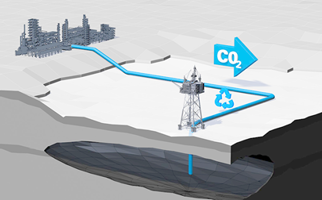
The Oil and Gas Authority (OGA), in conjunction with the East of England Energy Group (EEEGR), will host its second hackathon event in Norwich to bring operators and the supply chain together to focus on cost efficiencies and technological solutions applicable to the Southern North Sea’s (SNS) tight gas market.
Last year, the OGA and EEEGR launched a special interest group (SIG) focusing on SNS rejuvenation to highlight the importance of the region in maximising the economic recovery of the UK’s oil and gas reserves. One of the group’s priorities has been to focus in on tight gas opportunities in the Southern North Sea and from which the idea of a tight gas hackathon was conceived. With input from Shell, Centrica, Premier Oil and Baker Hughes, the event will act as a platform for operators and the supply chain to come together and both exchange ideas and collaborate on the challenges ahead.
Eric Marston, OGA SNS area manager, said: “Tight gas reservoirs are often presumed to be high cost and high risk yet we estimate 3.8 trillion cubic feet of tight gas remains locked in existing fields, undeveloped discoveries and prospects in the SNS.
“This hackathon will bring operators and the supply chain together to focus specifically on tight gas and the technologies which can unlock these opportunities. Beyond the immediate benefits of bringing these reservoirs on stream, the development of tight gas also has the ability to extend the economic life of remaining infrastructure, stimulate field redevelopments and marginal pools and support the local supply chain by building expertise and capability.”
The event is being supported by Centrica’s ‘pioneering practitioners’ who facilitate idea generation and discussion. Topics include:
- Stimulation: How can we do what we normally do better (i.e. more efficiently and cheaper)?
- Technology: How can we make reservoirs give up their gas more easily?
- Reservoirs: How can we better improve our understanding of reservoirs (e.g. improve our ability to identify open natural fractures, fault, baffles)?
- Production: How do we maintain production on existing tight gas fields?
- Logistics: What can be done to reduce the cost of logistics on tight has developments and how can we reduce the clean-up time on a fracked tight gas well?
Simon Gray, EEEGR CEO, said: “Energy production from gas now forms nearly 50% of the UK’s capacity, therefore ensuring a domestic supply of gas is vital to the UK’s energy strategy. Tight gas could play a huge role in satisfying that demand.
“Together with the OGA, EEEGR has formed a SNS rejuvenation SIG and one of its key work streams is considering how we locate, secure and harness the potential for tight gas in the SNS. As a result, we are jointly organising a problem solving hackathon event where we invite industry to come together to collaborate in finding the best solutions.
“With its unique mix of historic production from SNS gas, nuclear generation at Sizewell and the world’s largest windfarms, the East of England plays a vital role in the UK's energy production. Your knowledge and expertise are key to us harnessing this opportunity.”
The event takes place on 31 May 2017 at Dunston Hall, Norwich, from 08:30-16:00. It is free of charge to attend. All interested parties must register their interest via the EEEGR website and will be notified if they are allocated a place. Places are limited. For more information on the event, please see here.
ENDS
For more information please contact:
Leona Minellas
Communications Manager
Oil & Gas Authority
Tel: +44 (0) 300 020 1072
Email: leona.minellas@nstauthority.co.uk
Notes to editors:
- The hackathon concept was originally developed by the computer programming industry and has since been adopted by other sectors
- EEEGR is the industry association for energy in the East of England, representing over 350 members across the supply chain. It is a non-profit, business-led group committed to the sustained development of the energy sector in the region and the continued success of its members
- The OGA will shortly launch its Tight Gas Delivery Plan and associated guidance


